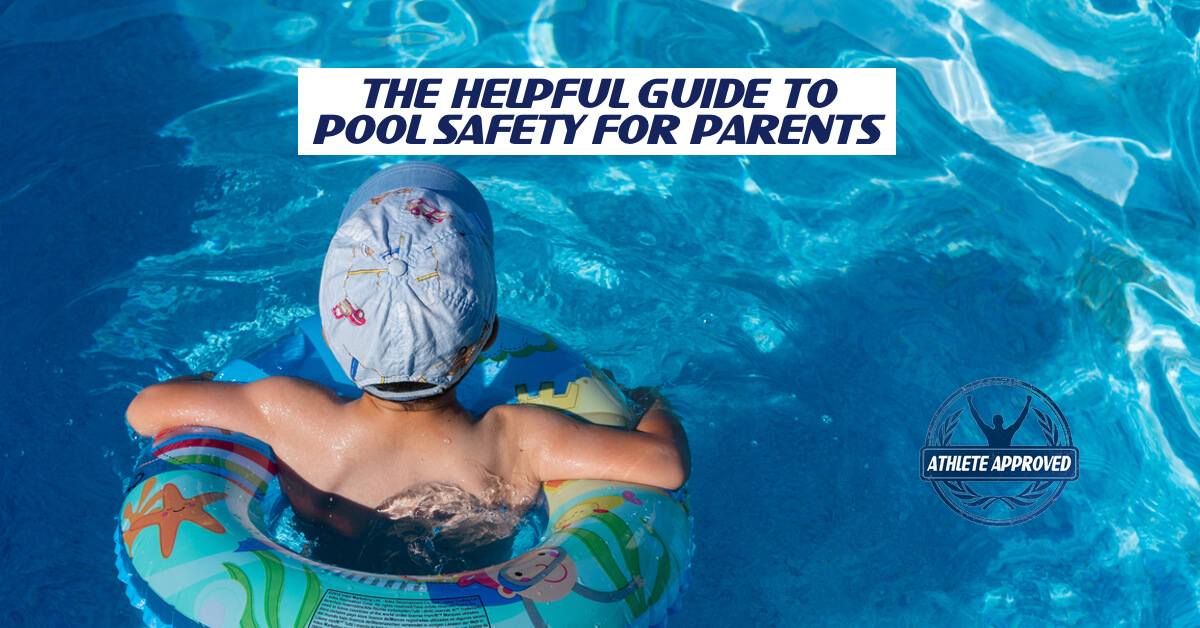
Athlete Approved is reader supported. If you make a purchase through our links, we earn an affiliate commission, at no extra cost to you. We highly recommend all products and only promote items that are Athlete Approved.
Swimming is a great activity for children. It is an excellent way to cool off in the summer, exercise, and it is fun! But there are potential hazards of swimming many parents do not realize.
This guide to water safety is made for parents. It is meant to give real-life practical guidelines to follow to ensure a safe experience for children and you too!
This pool safety guide could help you save a life!
Our guide to water safety includes the following topics:
- Understand the Dangers of Water
- Never Leave Children Unattended Around Water
- Drownings are Silent
- Do I Need to Supervise if there are Lifeguards?
- How to Determine if a Swimmer is Water Safe
- Teach Your Child the Basics on Water Safety
- The Good and Bad on Puddle Jumpers, Life Jackets, and Water Wings
Do not let tragedy be your teacher… If you are reading this article you are taking a great step to promote pool safety!
Please note that pool safety is a very serious topic. Some of this post is written in a light-hearted entertaining manor in efforts to engage and bring awareness to a topic that deserves a ton of attention.
Understand the Dangers of Water
Before you go to the pool thinking: “that would never happen to me”, take a look at the numbers.
According to the CDC, drownings are a leading cause of death for children:
- For children ages 1 – 14, drowning is the second leading cause of unintentional injury death (second to car accidents)
- For children ages 1 – 4, drowning is the second leading cause of death (second to birth defects)
- Everyday in the US, there are 11 fatal and 22 non fatal drownings per day
- 80% of people who die from drowning are male (may be due to risk taking behavior)
- Drowning statistic rates for African American and American Indian children are up to two times higher than caucasian children
The good news is there are many things you can do to prevent water related incidents from happening that we are going to cover in this article. It all starts with supervision.
Never Leave Children Unattended Around Water
In our experience, the most common thread in 99% of water related incidents is:
The child was not being supervised by a parent/guardian or responsible adult.
Children need supervision anytime they are in or around a body of water. For the sake of water safety, most health departments define “children” at 13 and under.
While it is best for a parent or guardian to be the supervising adult, we understand that may not always be possible.
Understand that no one will watch your child with the same care that you will. With that in mind, you can take the following precautions.
If you need to leave or cannot watch the pool area, be sure to designate a responsible adult as your Water Watcher. This person should know:
- What to do in case of emergency
- Have the ability to call 911 (and know the address of the pool)
- Life saving skills like CPR
If you have a nanny watching or send your child on a playdate or pool party, make sure pool safety is a priority.
There are so many distractions at the pool. The increased temptation to check your phone is not helping.
It can take only 20 seconds for a drowning to occur causing death or permanent brain damage. That is less time that it can take to catch up on your Instagram stories, check in on Facebook, or view that new trending TikTok video…
You get the idea, please put your smartphone away.
If you are going to spend time at the pool, the message is simple: watch your children. Drownings can happen quickly and go unnoticed until it is too late.
Drownings are Silent
We have all seen the movies depicting a person in trouble in the water. They call for help, make big splashes, and give the rescuing main character plenty of time to react.
In reality, nothing is further than the truth.
Drownings are silent. They can happen quickly with no one noticing. When a distressed swimmer is in trouble, they use all their air to breath, not scream for help.
There can never be too many eyes on the pool and yours are the most important.
Do I Need to Supervise if there are Lifeguards?
We will let our friends in Hollywood answer that:
Here is the deal: Lifeguards should be thought of as the LAST safety net in case of a pool emergency.
Lifeguards are responsible for ALL the swimmers in the pool. It is not practical, safe, or fair for them to have the only eyes on the pool.
While there are many wonderful lifeguards who do an excellent job constantly surveying the pool, there are also a few who do not.
The reality of the situation is that most lifeguards are seasonal. That makes the primary demographic of lifeguards as students. Think back to how responsible you were back in high school and college.
Now think: do you want that person to be the ONLY person watching your child in the water? Remember that drownings can happen silently in a matter of seconds.
The primary job of a lifeguard is to prevent a drowning from happening in the first place – so listen to them and help make their job easier.
If you hear a lifeguard bragging about all the saves they made, they need to do a better job of preventing them in the first place.
Next time you are at the pool, be someone who helps the lifeguard by taking responsibility of your swimmer(s). Do not make their already difficult and stressful job even harder.
How to Determine if a Swimmer is Water Safe
Water Safe is a swimmer’s ability to swim independently. This term is also known as Swim Safe.
It should be the goal of every parent to get their child Water Safe, however, it is important to know:
Being Water Safe does not make a swimmer invincible.
If your child is NOT Water Safe: You (or a responsible adult) should always be in the water with them. We recommend within one arms length reach at all times.
If you child is Water Safe: You can now supervise them from the pool deck instead of being in the water with them.
To test if a swimmer is Water Safe they should be able to demonstrate the ability to swim 25 yards and tread water for 1 minute. There are a variety of ways to test for water competency, but this is the most common.
Swim 25 yards:
- Ask your swimmer to swim 25 yards continuously without touching the side, bottom, or lane line.
- Do not allow the use of goggles. We are testing their ability swim should their goggles fall off.
- They can swim any in style, as long as they continue to make forward progress.
- You will typically know within the first few yards if they are going to make it.
Tread water for 1 minute:
- Ask your swimmer jump into the water from the pool deck, then start treading.
- The best cues to use are to keep their ears dry and eyes forward. This will prevent them from keeping their head back, which is a drowning position.
- Swimmers should not be able to touch the bottom of the pool when testing treading proficiency.
- After 1 minute, ask them to pull themselves completely out of the water.
While being water safe decreases the chances of drowning, nothing replaces adult supervision.
You may be wondering what about adults… Shouldn’t they Water Safe too?
Of course, it should be everyone’s goal to be Water Safe.
Safety protocols tend to focus on children with the understanding that adults know their limitations and understand risk better than children.
However, we all know adults who exercise less judgement than children, especially when alcohol (or other drugs) are involved… That is why it is best to never swim alone.
Know that it is never too late to learn how to swim for a child or adult!
Teach Your Child the Basics on Water Safety
Take time to explain safety rules and best practices with your children before you start swimming.
One of the best life skills you can teach your kiddo is how to swim. Swimming is one of the only sports that can save a life, plus you can do it as exercise your entire life.
Parents can follow this learn-to-swim progression, even if you have little experience:
- Blow bubbles with face in the water: Try humming their favorite song.
- Front float: Also knowns as “The Starfish”. (Dig in further with a full article on how to float)
- Back float: Put a swim toy on their stomach and ask them to balance it – this will push up their hips.
- Kicking on front with kickboard: Make sure they keep their eyes in the water between breaths.
- Kicking on side with kickboard: One hand on the kickboard – work in breathing to the side (instead of front).
- Catch-Up freestyle with a kickboard: Teach freestyle arms, grabbing the kickboard between each stroke.
Celebrate when your swimmer makes progress and have fun with them!
If your child goes under, while it is a big deal, do your best not to make a big deal of it to them. This can be traumatic for them and may cause fear in going back into the water again.
Instead, let them know you will always be there to help them and they are doing a great job!
Teaching your own child can be difficult, especially if you lack training and experience. If possible get in touch with a local swim program for more structured lessons.
When they are in swim lessons you can let the teacher do the structured teaching. Then your job is reinforcing through playing (a much more fun job).
The Good and Bad on Puddle Jumpers, Life Jackets, and Water Wings
When used correctly, flotation devices can be a great way for non Water Safe swimmers to enjoy the pool.
Teaching your child to swim is the best preventative measure a parent can take. However, when used with proper adult supervision, flotation devices like puddle jumpers and certain life jackets are a good option for children who are learning to use between lessons. They can provide a little extra help for kiddos and parents at the pool, but should not be 100% depended upon.
Before we go any further, parents need to understand the most important thing about flotation devices:
They do not replace parental supervision. You should still stay within an arms length reach of your non Water Safe child at all times, even when they are wearing a floatation device.
One of the dangers to be aware of is how floatation devices may make children feel too safe. As counterintuitive it might sound, they can provide a false sense of confidence.
Some children may not have the cognitive function to understand that they cannot swim without it. They will see the pool, get super excited, and jump on in (sometimes with all their clothes on).
With this in mind, take time to allow your child to also swim without the aid of a flotation device (with your assistance). The more time you can do this, the better. This will help them understand the difference.
The three most popular types of floatations devices you will find are the pool are:


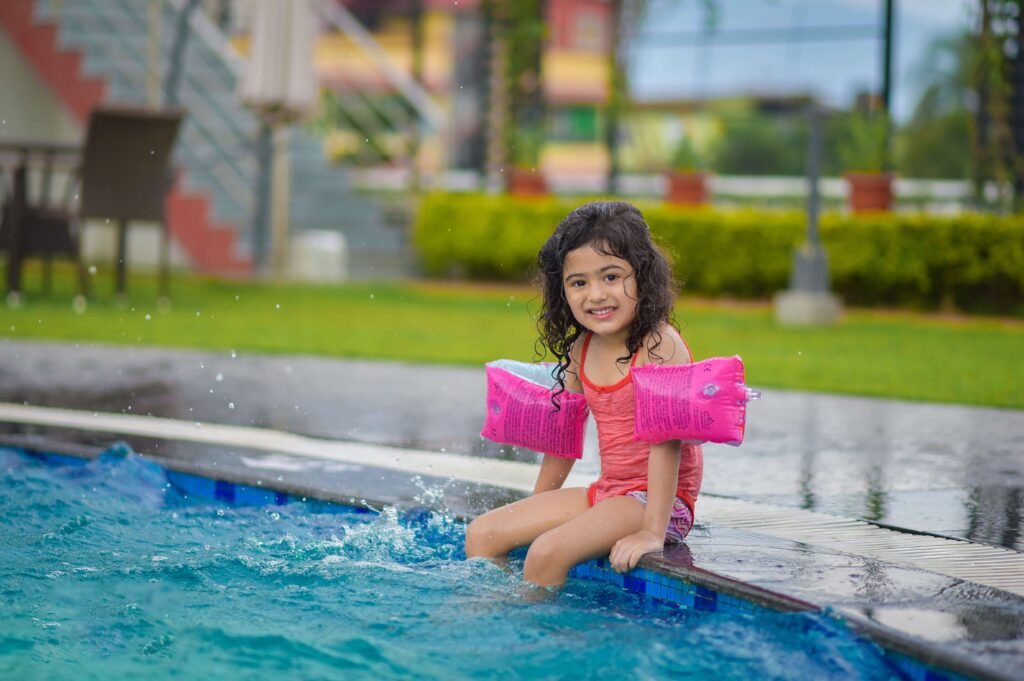
When looking for the right flotation device, it is important to choose one that is “Coast Guard Approved”. These will fit snugly and can be securely fastened with clips so they don’t slip off.
If you are going to use a flotation device for a non Water Safe swimmer, we recommend the Puddle Jumper.
It is great for kids who are just learning how to swim or have never been in water before. Compared to other flotation devices, it puts them into a more natural horizontal swimming position that allows their body learn how to move around the water.
With this safety tool, kiddos can swim around the water while naturally learning more about body position, kicking and pulling, and building swimming muscles.
Another great pick is Stearns Kids Puddle Jumper Hydroprene Life Jacket. The two clips and zipper makes it one of the safest life jackets on the water.
The fitted design gives it a snug a comfortable fit.
Beware of water wings: We DO NOT recommend these.
When a child jumps into the water with water wings, they artificially bring them back to the surface in a vertical position. This not only gives a false sense of security, but also places them in an unnatural body position.
To make matters worse, water wings are prone to falling off. There is no clip or safety strap securing them to our non Water Safe swimmers.
Flotation devices can be your friend when used properly, just understand the risks associated with them.
Conclusion on The Ultimate Guide to Pool Safety for Parents
We hope that you have found this guide to water safety helpful.
Remember, it is always important to be vigilant when your child is in or around any body of water. Watch them at all times and be sure you know what to do in an emergency situation.
We would love to hear your input on any of your pool safety tips in our comments!
*Equip yourself for success with our Athlete Approved Guide to Lap Swimming Equipment!*

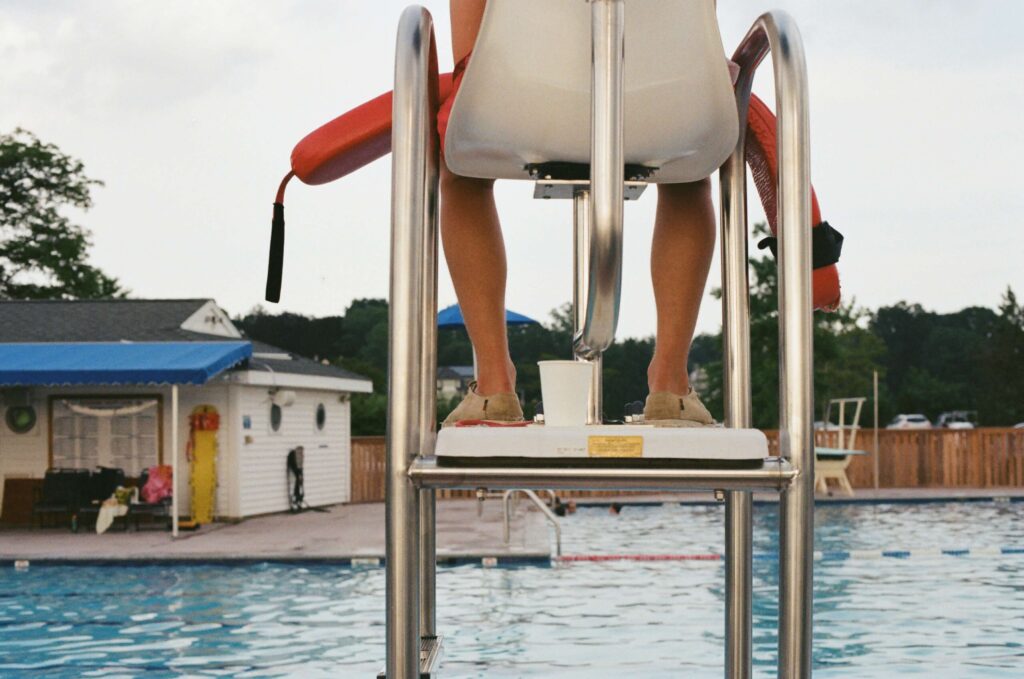


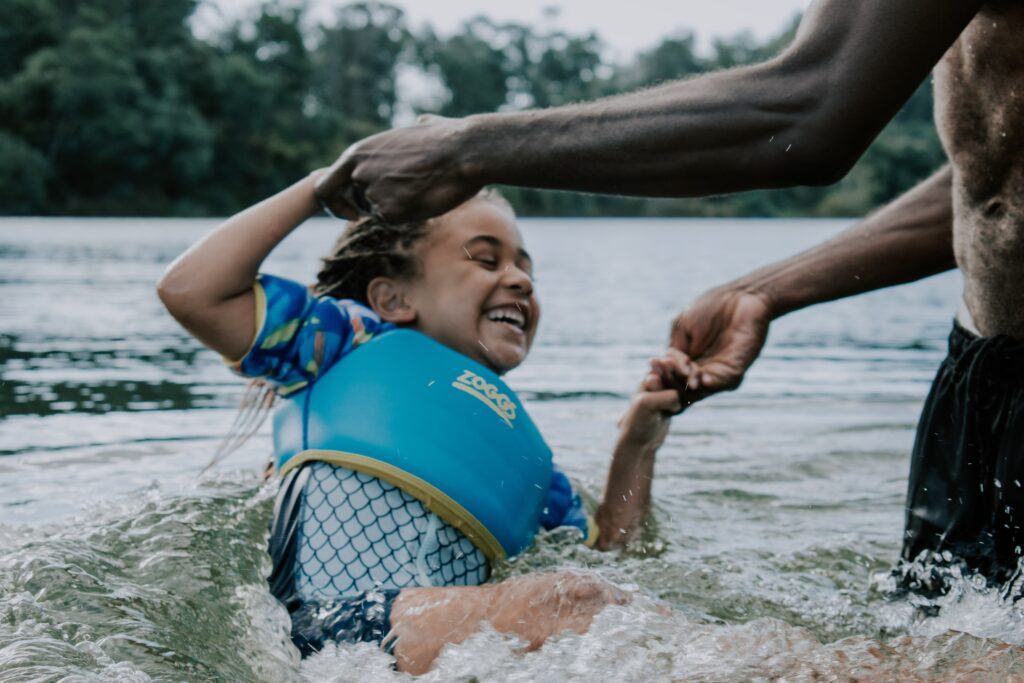

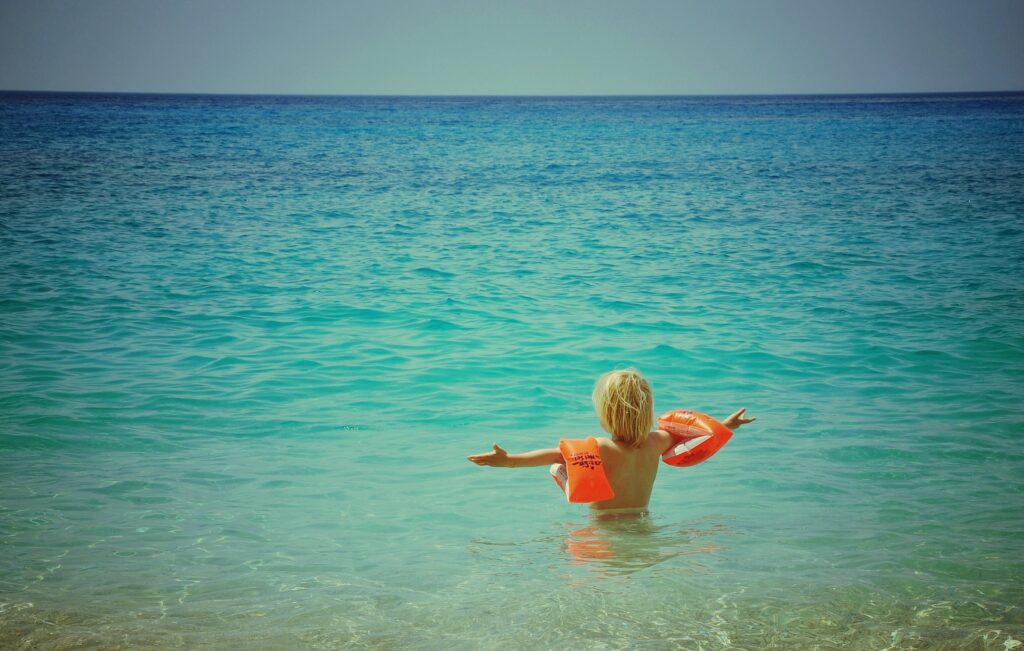
4 Comments
Puddle Jumpers are bad. Good for you to make a commission on sales.
Way, way better to sell goggles. Add fins too. Teach swimming.
Thank you for your feedback, water safety is a very important topic. Would you please elaborate beyond what we cover in the article on why you think puddle jumpers are bad?
We do agree that nothing replaces learning to swim. However, they are a good option for non-water safe children who are learning to use between lessons if their parents need a little extra help. Also, parental supervision and being within an arms-length distance of a non-water safe swimmer is a must.
We do earn a very small commission on our sales that help keep this blog going. However, we only recommend products we believe in. We would never compromise our integrity, especially when it comes to water safety.
I thoroughly enjoyed reading this informative piece. I am the new director of aquatics in Loudoun County Virginia. I am looking to network if possible.
Thank you Angelina for the compliment! Let me know if we can help further.